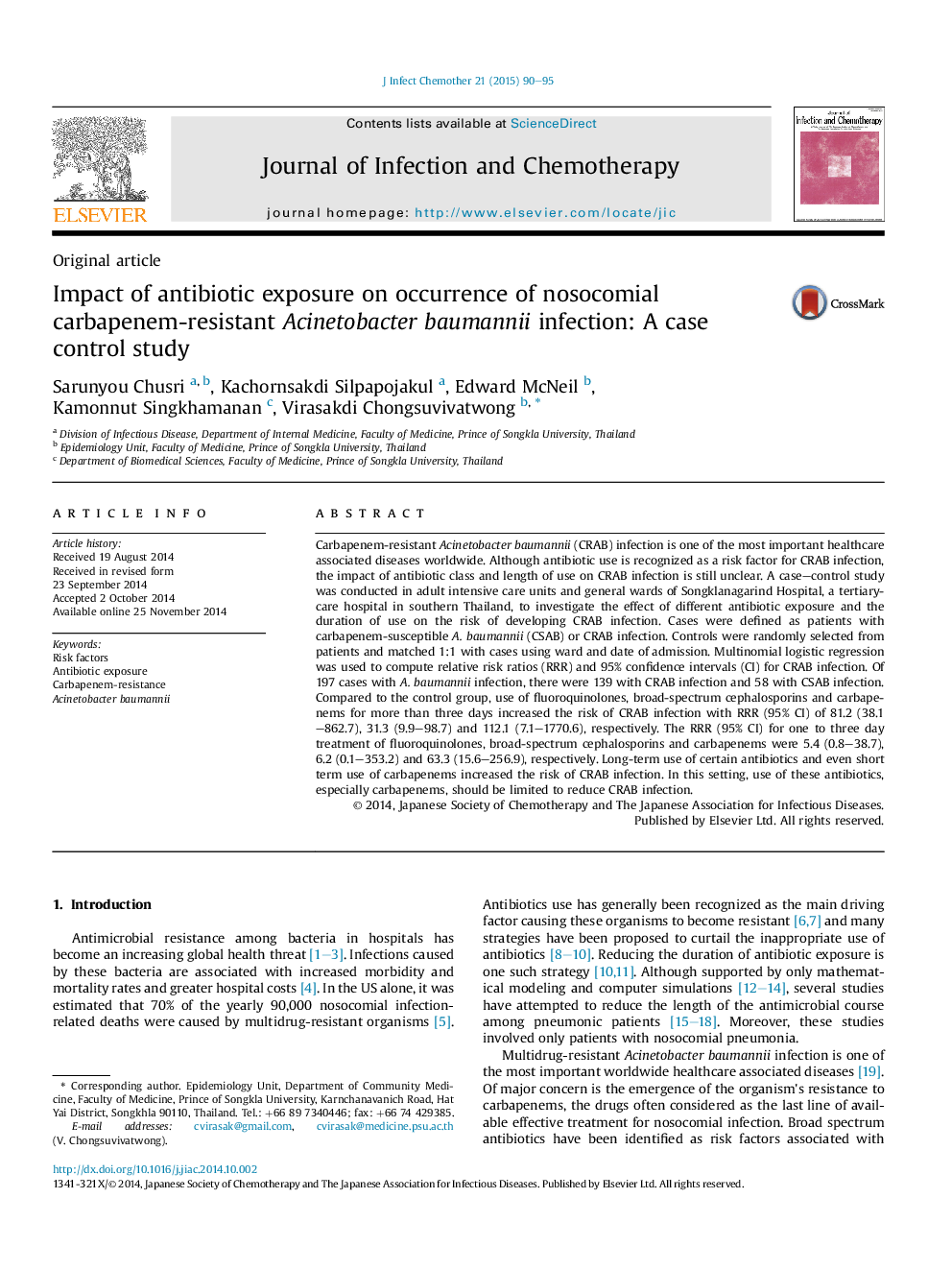| Article ID | Journal | Published Year | Pages | File Type |
|---|---|---|---|---|
| 3376775 | Journal of Infection and Chemotherapy | 2015 | 6 Pages |
Carbapenem-resistant Acinetobacter baumannii (CRAB) infection is one of the most important healthcare associated diseases worldwide. Although antibiotic use is recognized as a risk factor for CRAB infection, the impact of antibiotic class and length of use on CRAB infection is still unclear. A case–control study was conducted in adult intensive care units and general wards of Songklanagarind Hospital, a tertiary-care hospital in southern Thailand, to investigate the effect of different antibiotic exposure and the duration of use on the risk of developing CRAB infection. Cases were defined as patients with carbapenem-susceptible A. baumannii (CSAB) or CRAB infection. Controls were randomly selected from patients and matched 1:1 with cases using ward and date of admission. Multinomial logistic regression was used to compute relative risk ratios (RRR) and 95% confidence intervals (CI) for CRAB infection. Of 197 cases with A. baumannii infection, there were 139 with CRAB infection and 58 with CSAB infection. Compared to the control group, use of fluoroquinolones, broad-spectrum cephalosporins and carbapenems for more than three days increased the risk of CRAB infection with RRR (95% CI) of 81.2 (38.1–862.7), 31.3 (9.9–98.7) and 112.1 (7.1–1770.6), respectively. The RRR (95% CI) for one to three day treatment of fluoroquinolones, broad-spectrum cephalosporins and carbapenems were 5.4 (0.8–38.7), 6.2 (0.1–353.2) and 63.3 (15.6–256.9), respectively. Long-term use of certain antibiotics and even short term use of carbapenems increased the risk of CRAB infection. In this setting, use of these antibiotics, especially carbapenems, should be limited to reduce CRAB infection.
